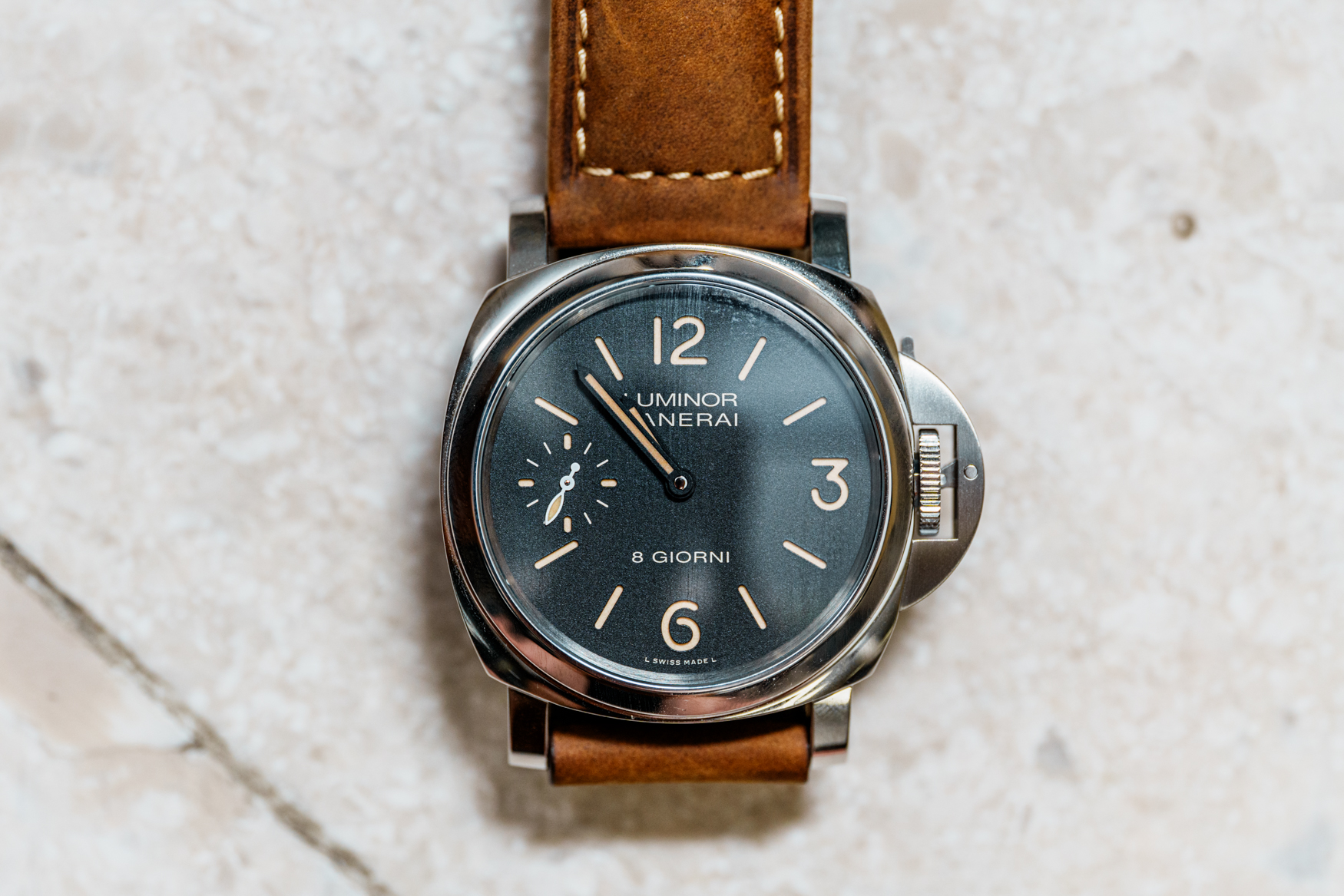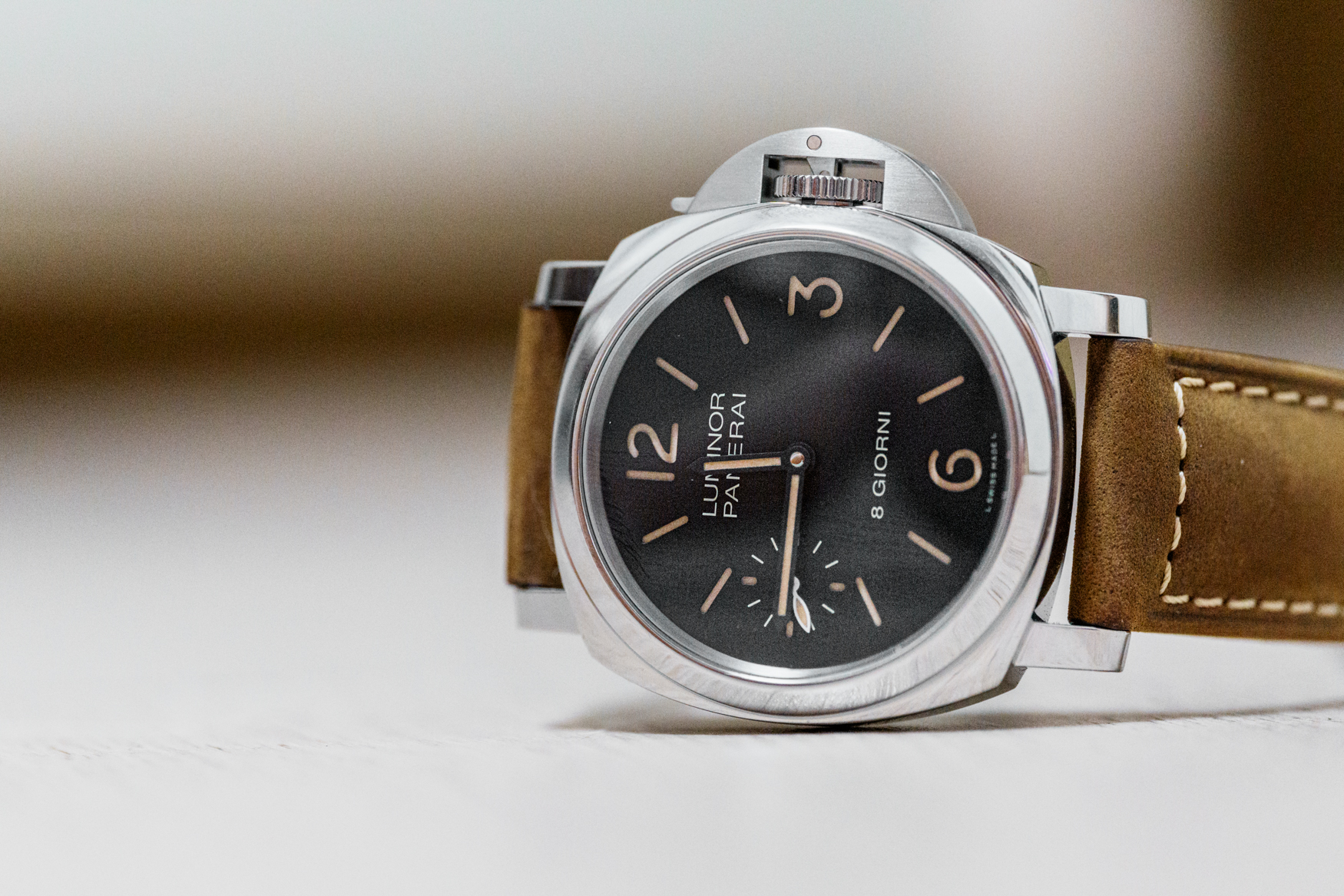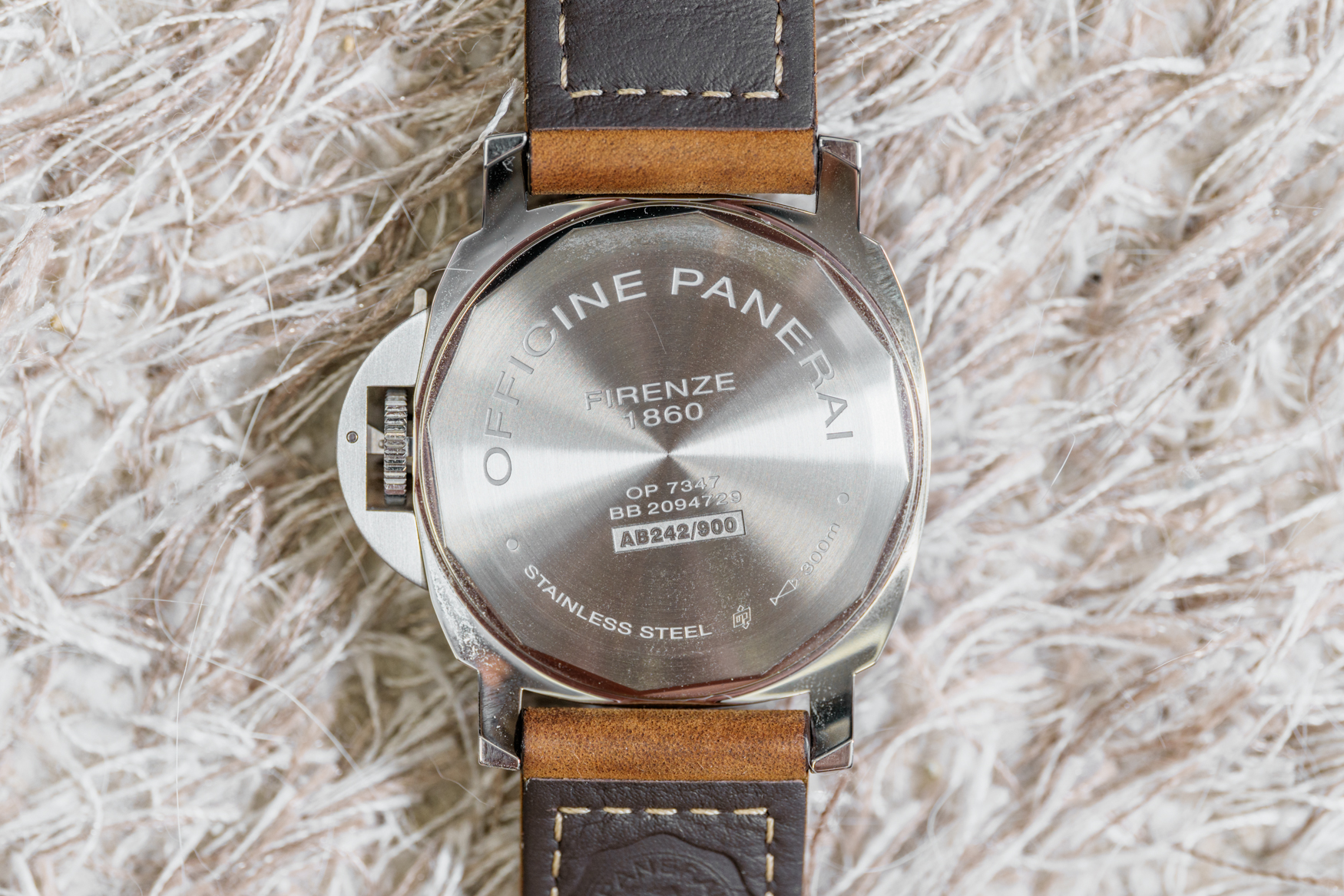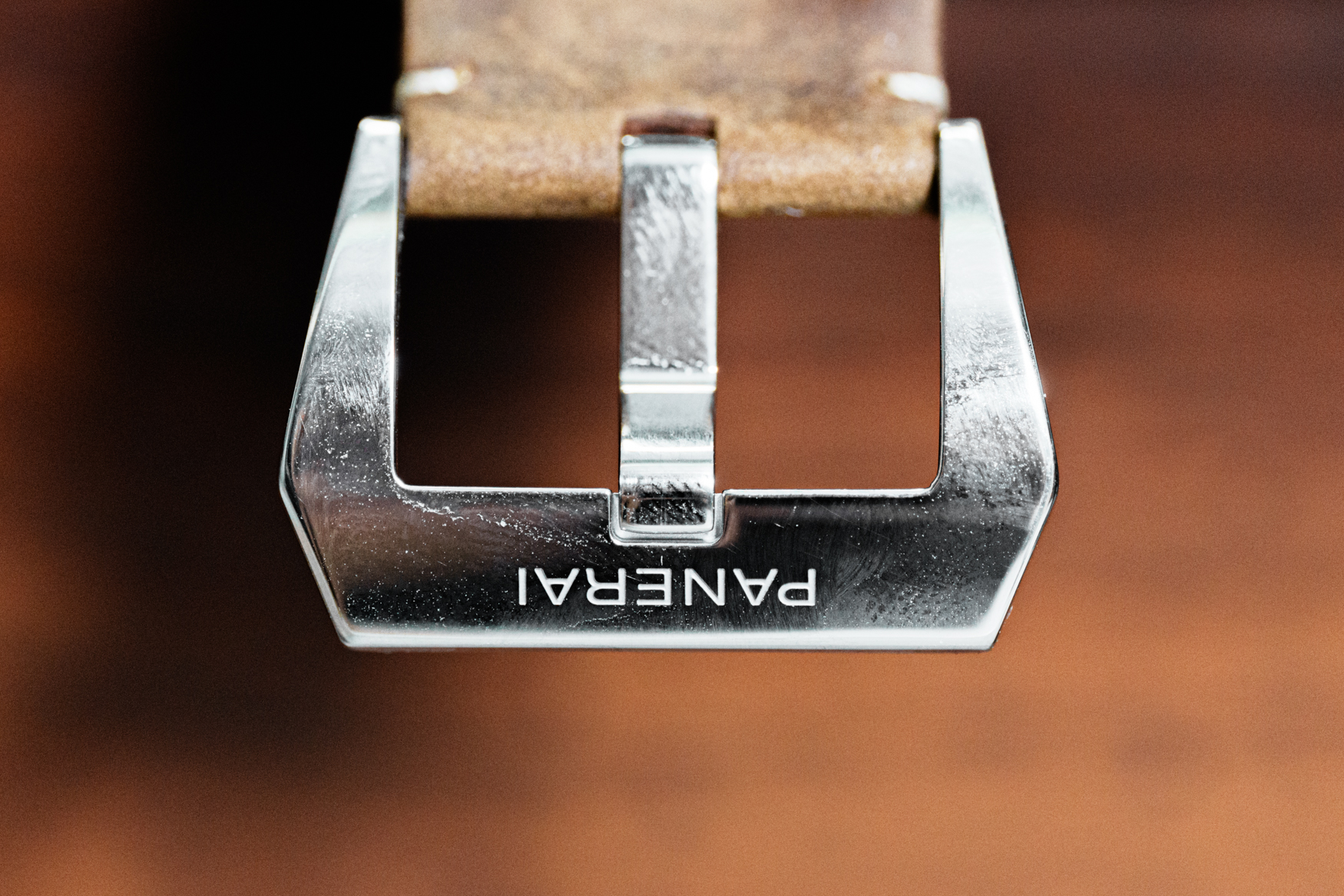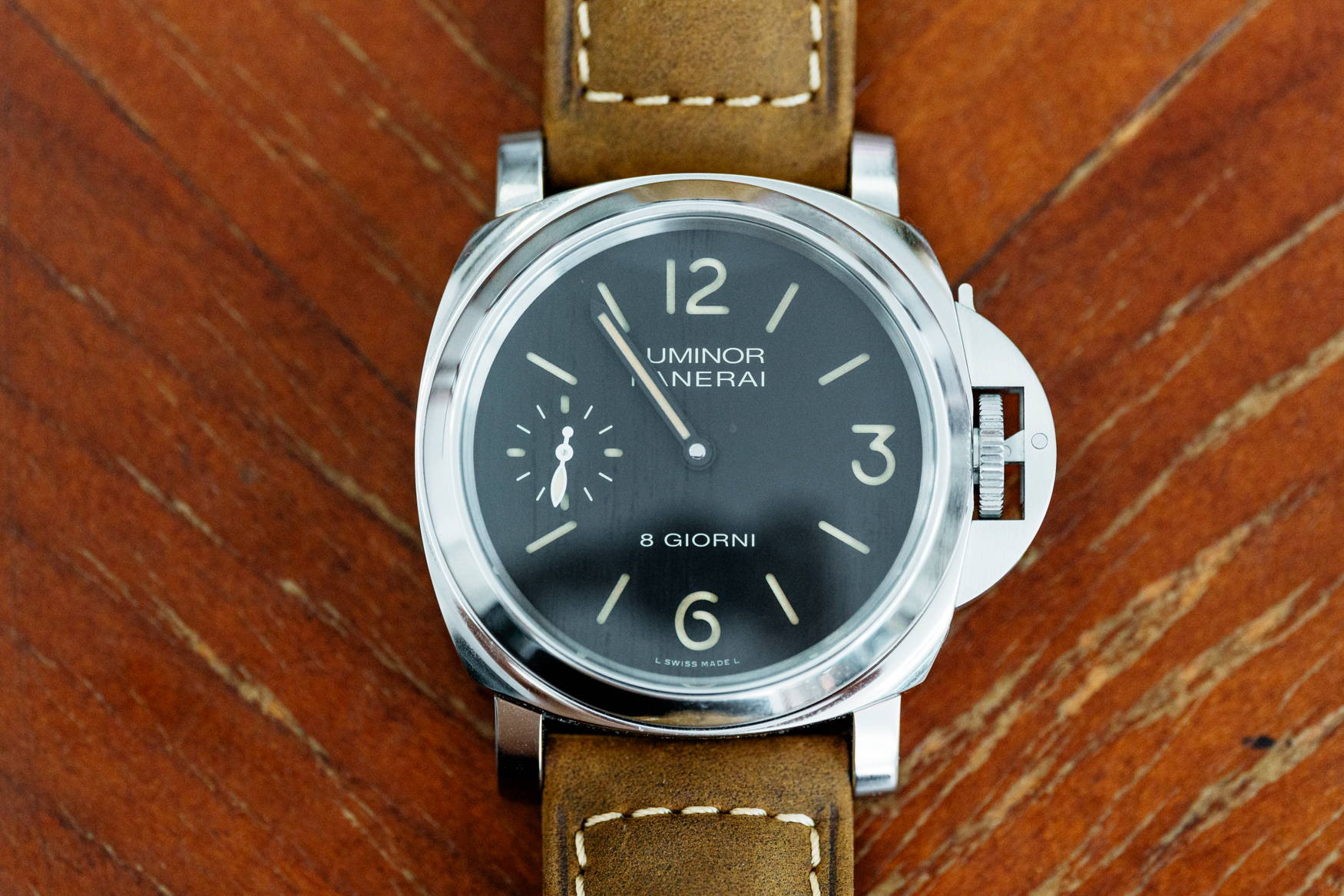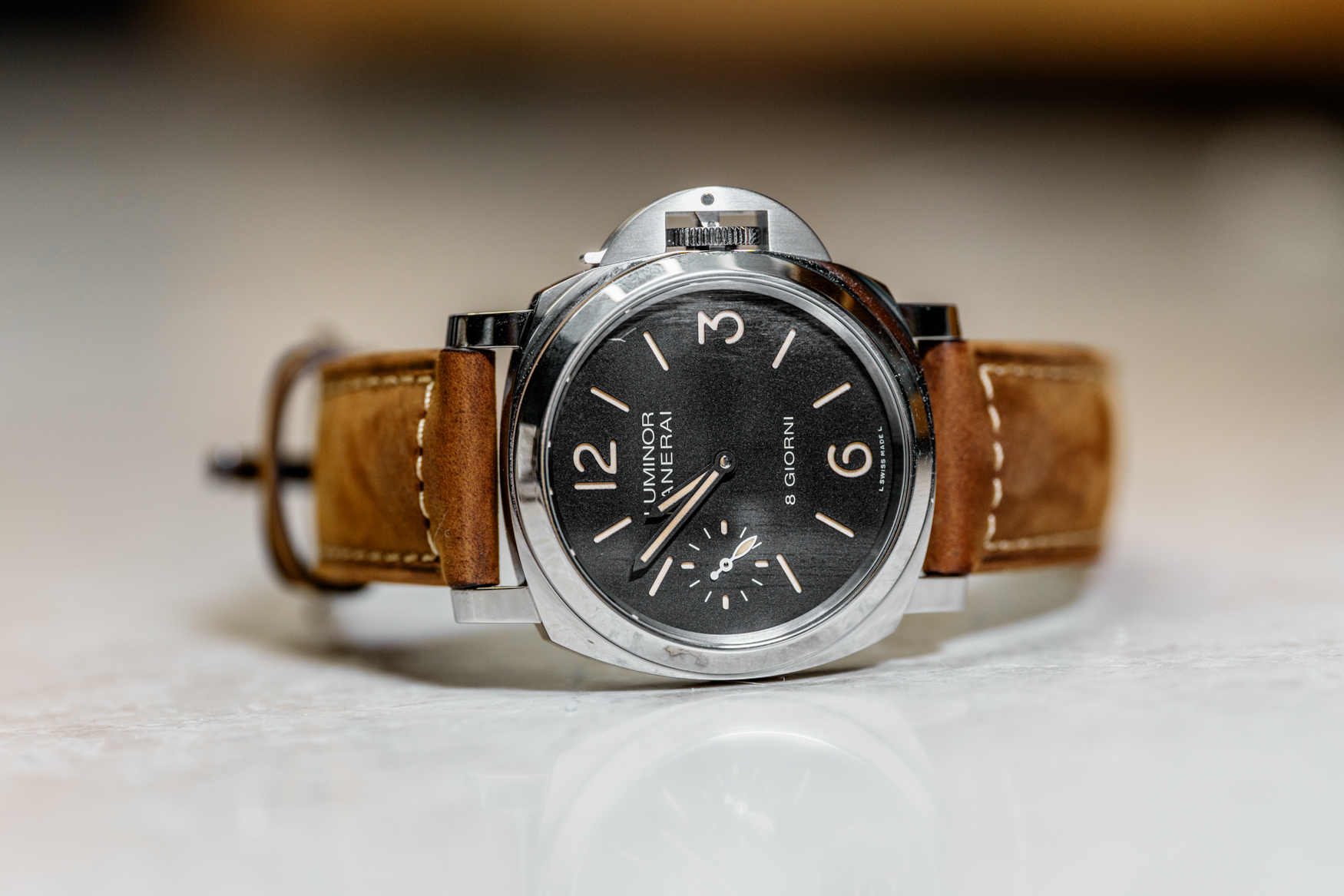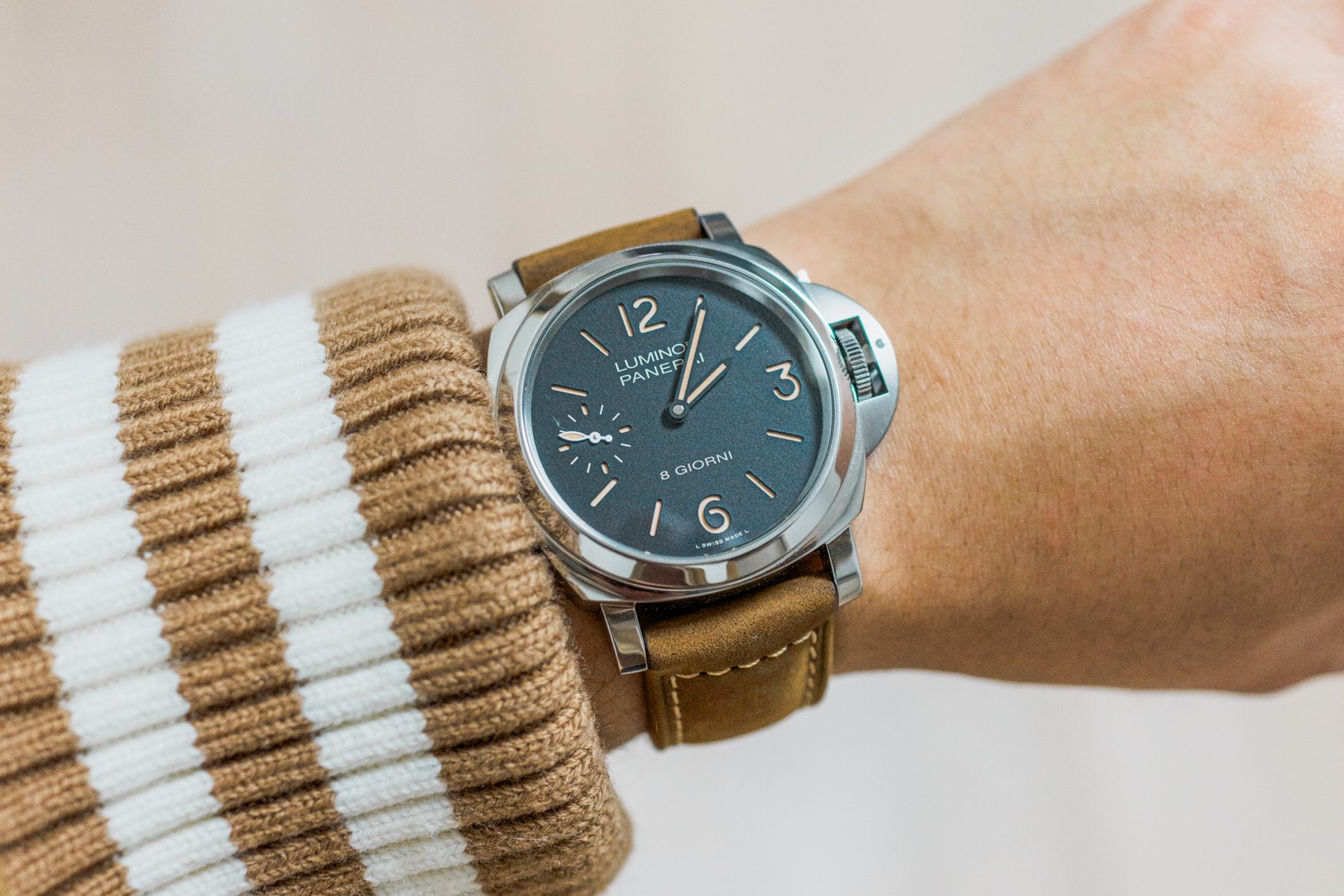Blog Đồng Hồ 360
Panerai Luminor 8 Giorni PAM00915 owner’s review
Jason Lee
I’ve spent the last decade largely ignoring Panerai. Not out of hostility—just habit. My comfort zone was defined by traditional dive and GMT designs under 42mm, with occasional detours into Audemars Piguet, Vacheron Constantin and Grand Seiko. Panerai’s proportions and its unmistakable crown guard felt like a different language. Add to that the brand’s stormy run of enthusiast controversy—unfinished movements behind solid backs, “in‑house” architecture some felt too derivative, and plastic components inside certain calibres—and there was little incentive for me to learn that language.
This isn’t an attempt to resolve any of those debates. It’s simply an account of how one reference, the Luminor 8 Giorni PAM00915, pushed through my scepticism and became a watch I now reach for more often than some considerably pricier pieces. The process moved from mild curiosity to outright purchase in a way I didn’t expect, and the reasons are tangible: the way the case sits, the sandwich dial’s depth, the stark little seconds at nine, and the straightforward pleasure of a long‑wind manual movement. There are caveats, and I’ll get to them. But first, how I got here.
First contact: design intrigue, movement misgivings
My first serious look at Panerai happened at the brand’s Seoul boutique. I don’t buy into brand lore; if the watch doesn’t make sense on the wrist, the history remains trivia. On the wrist, the Luminor shape clicked more than I’d anticipated. The proportions are unapologetically Panerai: a cushion‑ish case, wide polished bezel, blocky lugs, and of course, the crown‑guard bridge. It’s quirky if your reference points are Rolex Submariners and GMT‑Masters, but the quirkiness reads as deliberate.
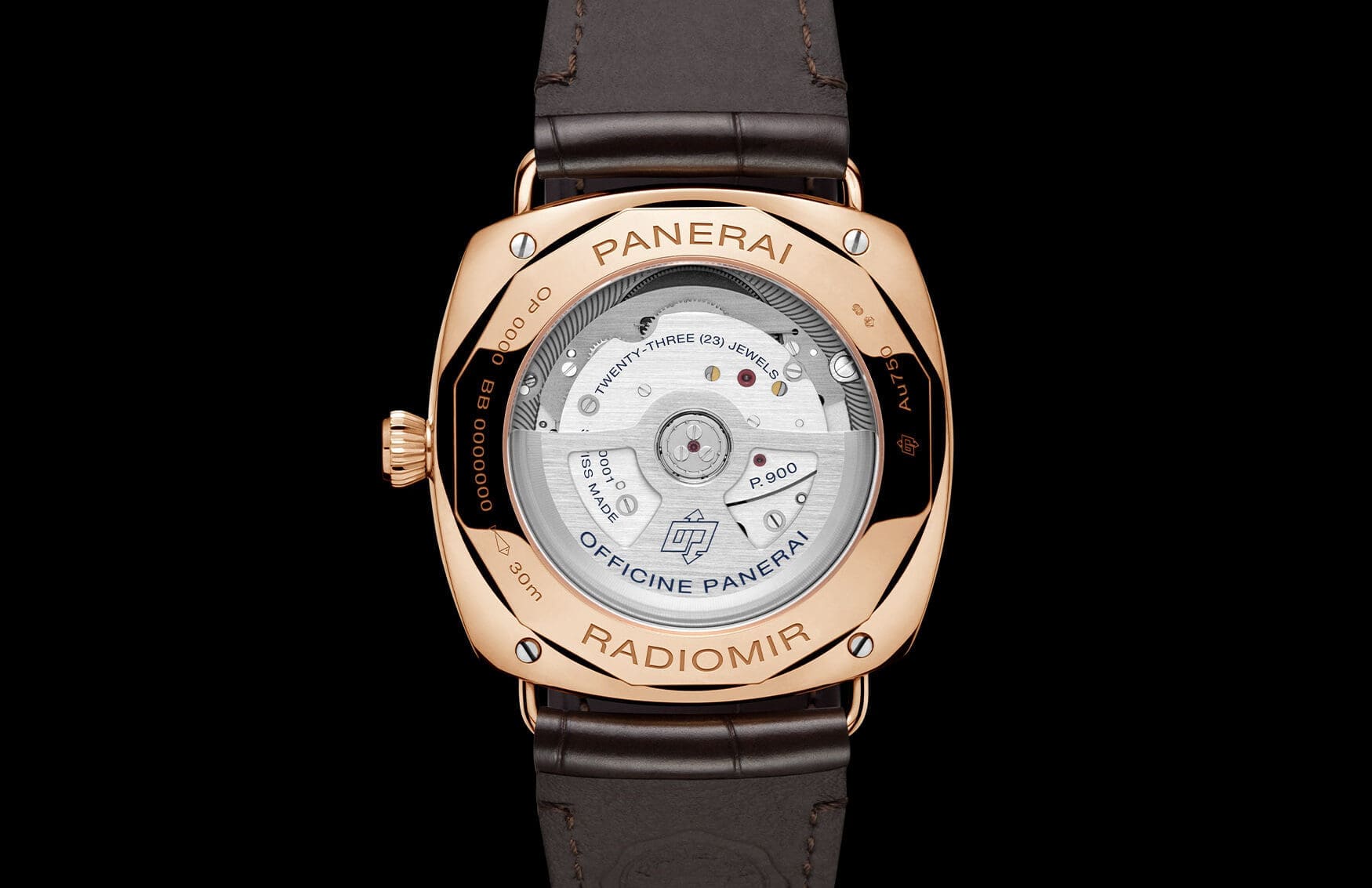

Then I turned the watch over. The display back I saw that day wasn’t attached to the PAM00915, but to a different, display‑back Panerai at a roughly US$10,000 price point—and the movement, while clean, felt visually austere for the money. I’m not a movement snob, but architecture and finishing matter, especially when a brand stakes its pride on vertical integration. What I saw looked closer to a very nicely finished off‑the‑shelf calibre than something with unmistakable internal DNA. That impression, fair or not, cooled my momentum.
The search that brought me back
Weeks later, I was hunting specifically for a manual‑winding watch with a substantial power reserve. This wasn’t about romance alone. I like the ritual of winding, but I also know myself: if a watch needs daily attention to stay alive, I’ll eventually default to something automatic. An eight‑day reserve would remove that friction.
Naturally, that search surfaced the Luminor 8 Giorni. On paper, it covered everything I was after: classic Luminor lines, a solid case back (hiding the movement I didn’t want to look at), a manual calibre with eight days of autonomy, and a price that felt measured at around US$8,000 relative to what else the market offers for that combination. Still, I returned to the boutique as a sceptic… But on the wrist, my scepticism lasted about five seconds.
Case and wearability: 44mm, but not the whole story
My wrist is 6.6 inches: not huge, not tiny. A 44mm case with long lugs should be a non‑starter on paper. In practice, the Luminor case’s sloped lugs help the watch lie down rather than stand up, and the cushion profile keeps the visual mass centred. It wears oversized, no question, but oversized with intent. Panerai’s design vocabulary is built around presence; chasing visual compactness would miss the point. If you like the Luminor silhouette, you’re likely also tolerant of its footprint.
The fully polished case is also an interesting study. Ordinarily, I prefer brushed finishing on sports watches for both aesthetics and longevity. Here, the mirror surfaces feel correct because the watch isn’t trying to look like a blunt instrument. The brushed crown‑guard bridge and brushed solid back break up the surface enough to avoid monotony. The result is cohesive: formality on the front, tool echoes in the hardware.
A word on the crown‑guard mechanism: if you haven’t lived with one, it’s more tactile pleasure than party trick. Flicking open the lever for winding or setting, then closing it to seal the crown, becomes part of how you experience the watch. It’s the kind of physical interaction most modern watches streamline out of existence. Panerai leans into it, and the daily ritual gives the piece personality.
Dial and legibility: sandwich depth, honest textures
Panerai has many dials, but the sandwich construction—cutouts for numerals and indices over a luminous underlayer—is the one that justifies the width of these watches. On the PAM00915, the effect is pronounced without being theatrical. The faux‑patina tone of the lume is a design choice that will always divide opinion; on this example, pairing it with a matte, textured black dial avoids the “costume” feel that can happen when vintage cues meet gloss. In short, it looks lived‑in, not styled.
The small seconds at nine adds essential motion and keeps the dial from feeling like a billboard. The white seconds hand—and matching white “Luminor Panerai” and “8 GIORNI” text—introduce crisp accents against the black ground so the sub‑dial doesn’t float off as a foreign body. The oversized Arabic numerals at the quarters and stick indices elsewhere deliver instant legibility, assisted by straightforward sword‑style hands. It’s a bluntly legible dial, but the layering and textures give it more nuance than the measurements suggest.
The eight‑day calibre: the right kind of quiet
Let’s talk about what it’s like to live with an eight‑day manual movement when you can’t see it. First, the obvious: if you enjoy winding, the longer reserve means longer wind‑ups from zero. I don’t mind that; it’s part of the watch’s voice. More importantly, the reserve gives you freedom to rotate other pieces without condemning the Panerai to a permanent wind‑and‑reset routine. That sounds like convenience, and it is—but it’s also the reason this watch gets more wrist time than the specs alone would forecast. I can wear it for a few days, switch out, and return a week later to find it still alive.
One caveat: there’s no power‑reserve indicator, dial‑side or back. In a watch explicitly selling duration, an indicator would be practical and emotionally satisfying—winding to “full” is a minor joy of owning a long‑reserve manual. Panerai has historical and aesthetic reasons to keep the dial clean, and I understand them, but this choice trades some functional delight for purity. You learn to judge winding by feel, which is fine; it just could be finer with a gauge.
I also want to be clear about expectations. The movement’s architecture and finishing—you don’t see them here, by design. That was my preference, given earlier impressions of display‑back models in this price bracket. If you enjoy bridges that look like sculpture and elaborate finishing, you’ll find more to feast on from brands that prioritise visual theatre in the same price range. The Luminor 8 Giorni instead leads with utility: long autonomy, hand‑wound engagement, and a solid back that keeps the watch’s focus outward.
Strap choices and real‑world comfort
The watch arrived on a black calfskin strap with an OEM pin buckle. The strap was initially stiff—not unusual—but softened after a few wears. Given the lume tone and dial texture, I quickly switched to a brown suede strap, which harmonises with the faux‑patina and takes a bit of shine off the polished case. The effect is straightforward and cohesive, less “demo unit” and more daily watch.
Two notes for the brand. First, no deployant option on this model feels like an oversight, particularly for a watch with a solid back and upscale positioning. A well‑designed deployant would enhance comfort and longevity without compromising the toolish aesthetic. Second, the strap ecosystem is a huge part of Panerai culture; leaning into that with more factory options that match the dial tones would make life easier for buyers who don’t want to go aftermarket on day two.
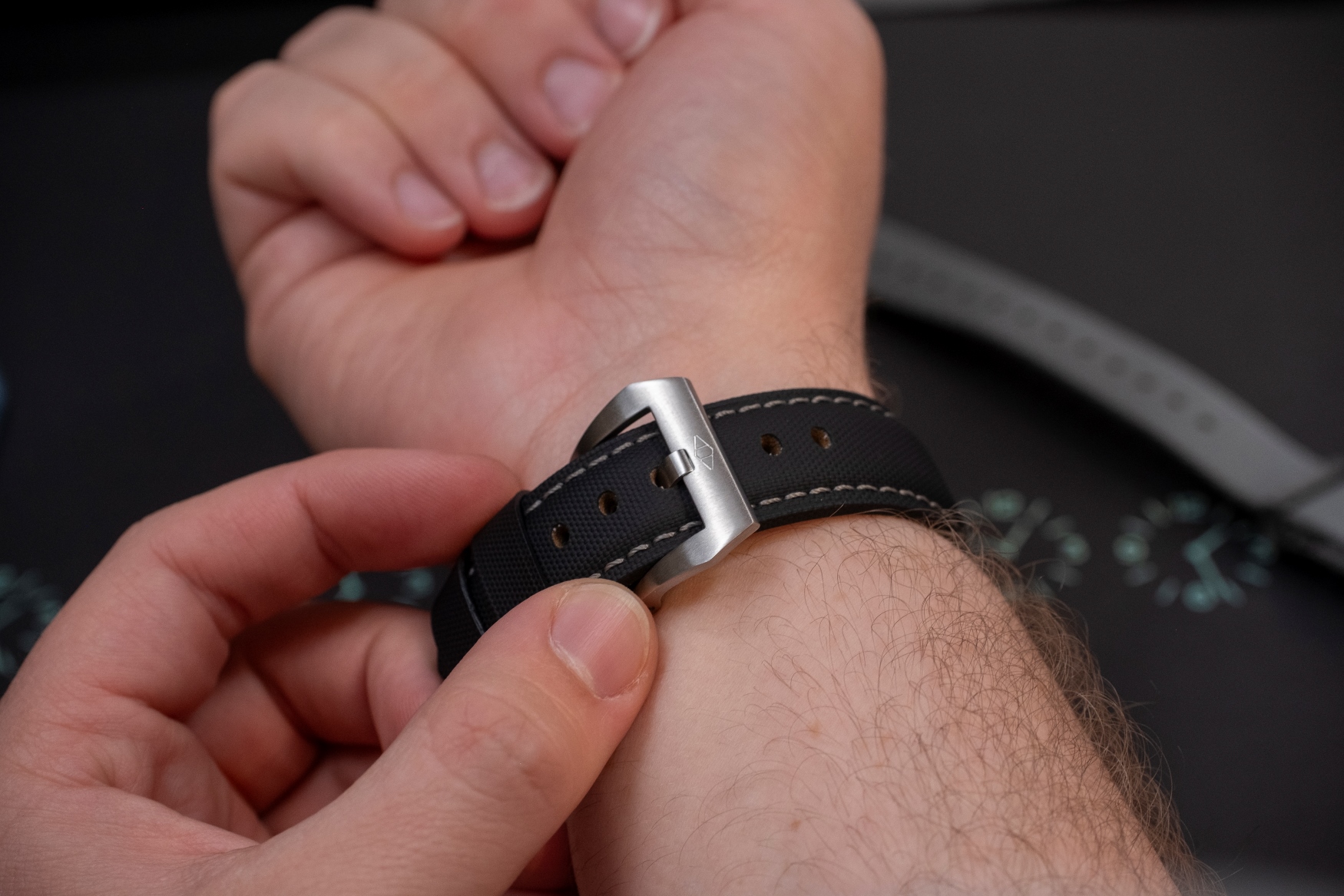

On comfort: the lug geometry makes the 44mm case wearable on a medium wrist, but be realistic. This is an oversized watch. If your wardrobe leans toward snug cuffs, you’ll notice it. If your preference is an unobtrusive “do‑everything” piece, this isn’t it. If what you want is visual clarity and wrist presence that doesn’t veer into novelty, it succeeds.
How it sits in a collection that skews conservative
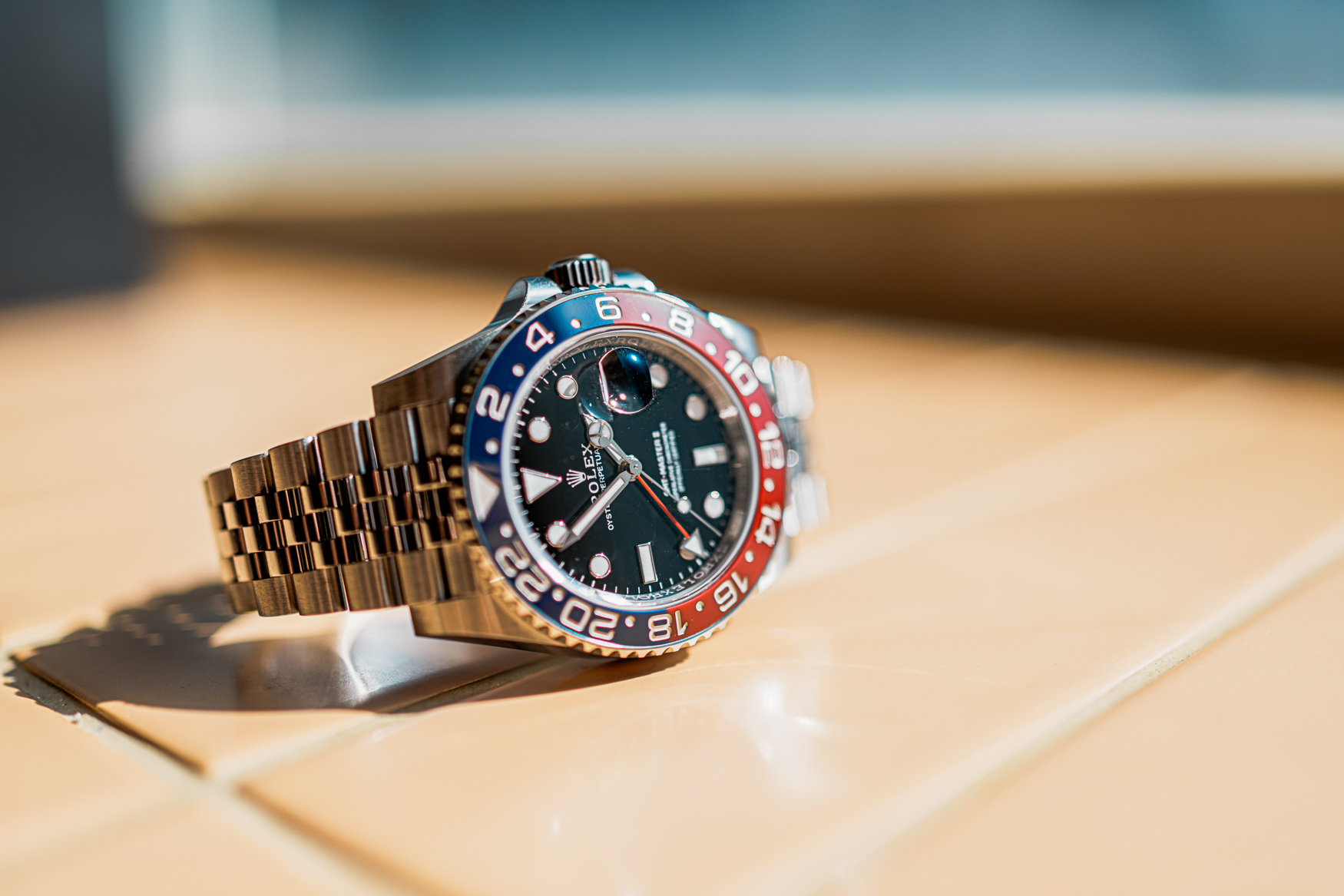

Coming from decades of Rolex Submariner/GMT-Master II familiarity, this Panerai occupies a different lane. It’s not attempting the same kind of versatility. Instead, it gives you a singular silhouette, a dial with genuine dimensional depth, and a tactile operating experience thanks to the crown‑guard and manual wind. In return, you accept size and a more limited formal bandwidth. That trade has turned out to be a good one for me.


Against pieces from Audemars Piguet and Grand Seiko that cost more and deliver measures of finishing those brands are known for, the Panerai stands out by feeling more distinctive day to day. Not better in every metric—just more itself. It has pushed me to reconsider an assumption I’ve carried for years: that the best watch is the one that does the most with the least drama. Sometimes, character is the point.
The brand baggage, handled pragmatically
There’s no sense pretending the past decade of discourse around Panerai doesn’t exist. The arguments have been aired: questions about movement finishing behind solid backs, aesthetic parallels between “in‑house” architecture and supplier movements elsewhere, and the presence of plastic components inside certain calibres. Enthusiasts care about these things, and brands should expect scrutiny at this level.
My approach with the PAM00915 was to sidestep the part that bothered me. I picked a solid‑back model so I’m not paying for a view I wouldn’t enjoy. I also framed the purchase around the on‑wrist experience: how it wears, how it looks, how it winds, and whether it solved the long‑reserve brief better than alternatives at the price. On those terms, it succeeds. That doesn’t negate the broader conversations, and if those issues are disqualifying for you, fair enough. For me, the practical solution was to buy the version that puts the brand’s best foot forward.
Value and alternatives, briefly
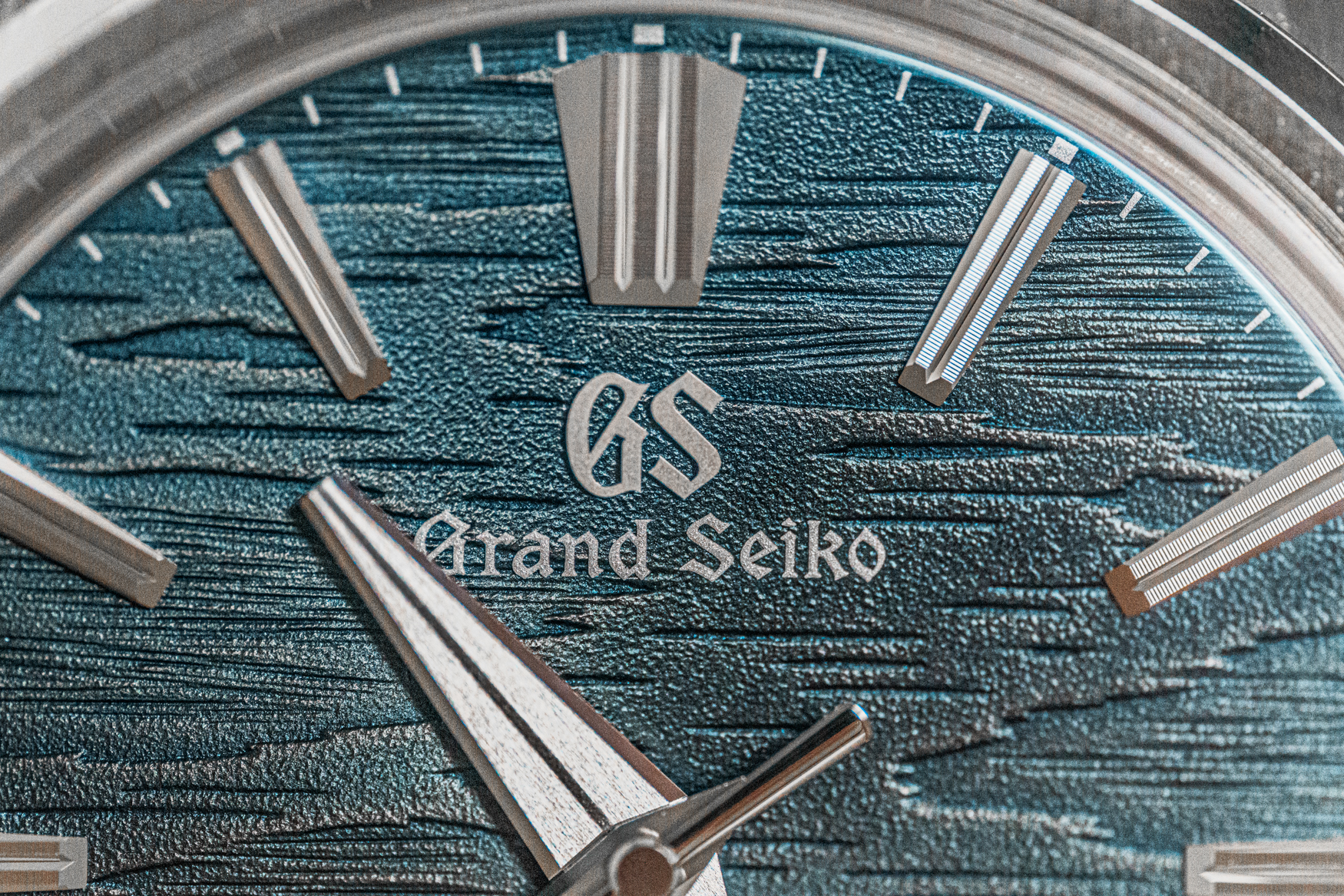

At around US$8,000, a hand‑wound watch with eight days of autonomy from a mainstream Swiss‑Italian marque is not a common proposition. There are longer‑reserve pieces out there, but they often live at significantly higher price points and usually present very different aesthetics. If you want the Luminor language with genuine long‑reserve utility—and you prefer not to see the movement—the 8 Giorni fills a niche that few others directly address.
Could you find more refinement in movement decoration elsewhere for similar money? Yes. Could you find a more compact daily wearer? Absolutely. But if the Luminor silhouette speaks to you and the manual‑wind, long‑reserve brief is the lure, the value case becomes clearer than the spec sheet alone suggests.
Daily use: the little things that add up
Living with the PAM00915 has underscored how small, consistent pleasures drive wrist time. The lever click of the crown‑guard. The slow, deliberate wind to top up the barrel after a few days. The way the sandwich numerals catch light and shadow, creating depth without gloss. The white seconds hand snipping around at nine, a minimal yet constant indicator that the movement is alive. And the matte, textured dial that keeps the large surface area from feeling blank.
There’s also a certain satisfaction in how the watch resists fuss. No date to set. No bezel to align. No display‑back to peer at and judge. Just wind, wear, enjoy, repeat—on your schedule, not the watch’s.
Sizing up (or down): a practical note


My advice to prospective Panerai buyers is simple: lean into the brand’s scale, but choose your scale. For some, 42mm will strike the best balance; for others, 44mm is the sweet spot where the Luminor reads correctly without overwhelming. And for committed traditionalists or larger wrists, 47mm can make the most sense. The important part is to judge on the wrist, not on the spec sheet. The case geometry matters as much as the diameter, and Panerai’s sloped lugs and case curvature do more than numbers suggest.
Closing thoughts
I expected to try a Panerai and walk away, confirming my prior biases: interesting design, not for me. Instead, the Luminor 8 Giorni PAM00915 has become a repeat choice in a collection that includes pieces with more elaborate movements and more conventional dimensions. It wears oversized but intentionally; its sandwich dial gives real depth, and its manual‑wind, eight‑day heart makes it easy to live with rather than just admire.
None of that erases the larger discussions around the brand, and I’m not trying to. What this watch did was offer a clear, practical path through them: choose the version that emphasises the on‑wrist experience, and judge it on those terms. By that measure, the PAM00915 makes a strong case—quietly, consistently, and in a way that has surprised me most of all.


